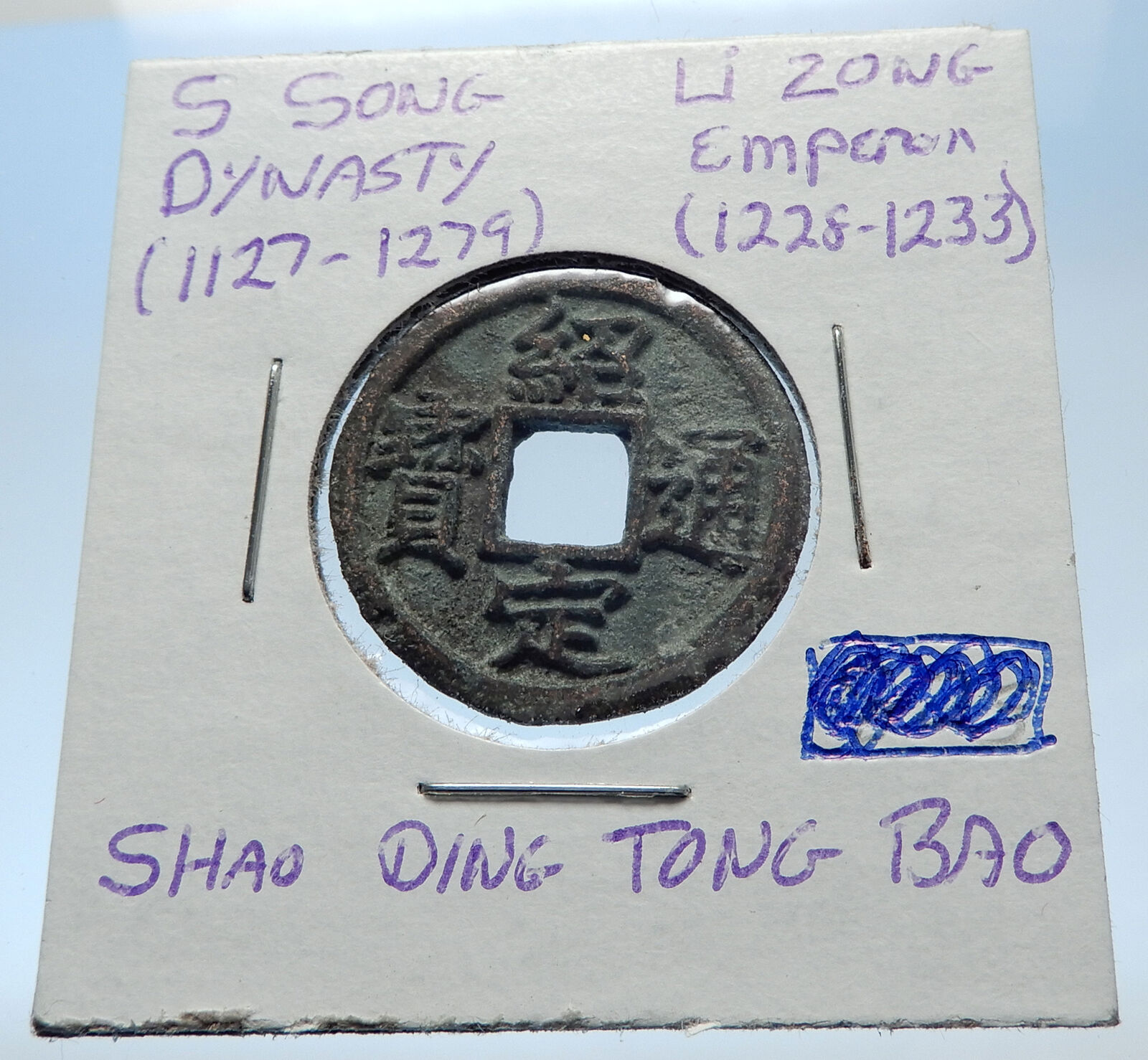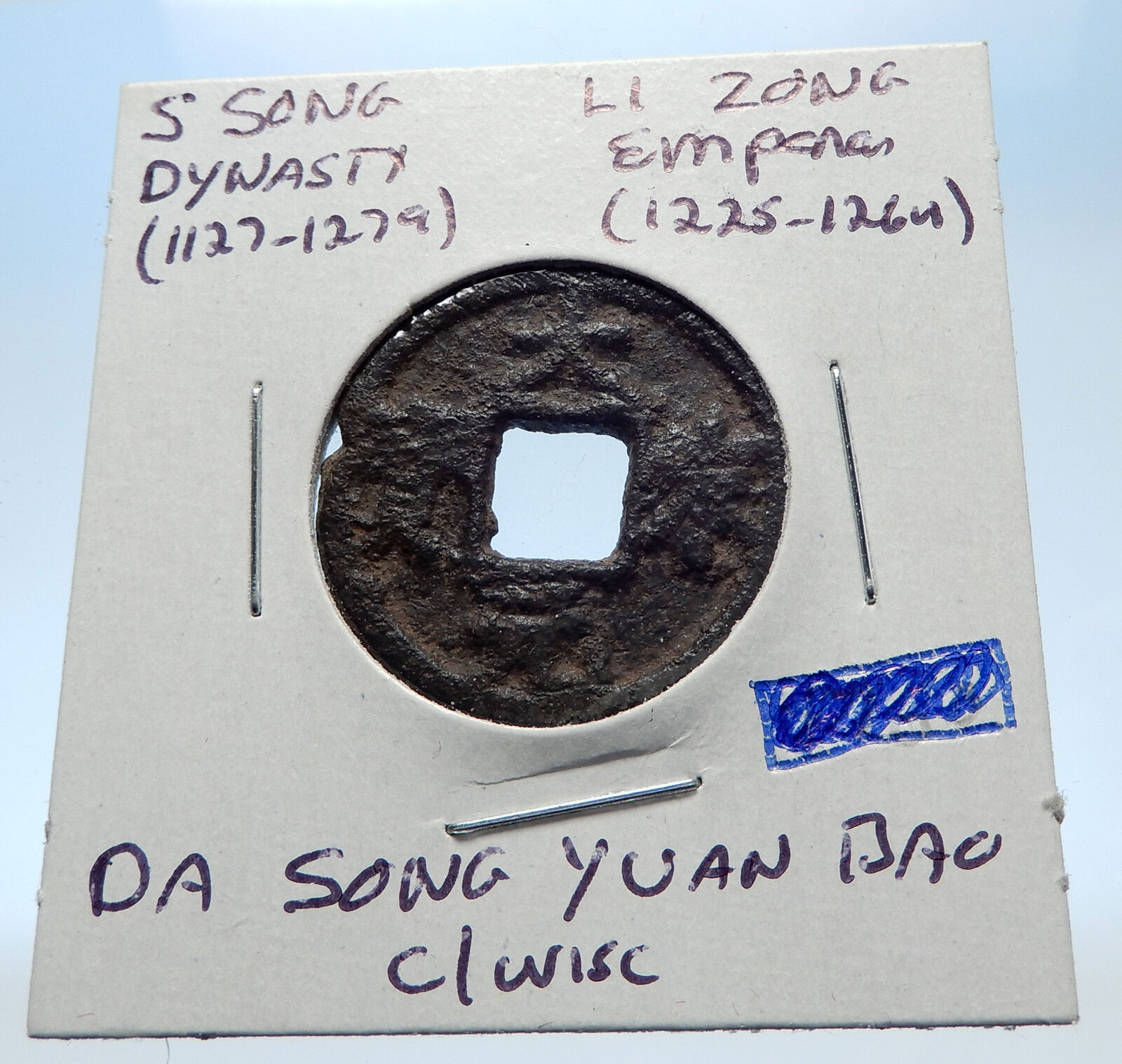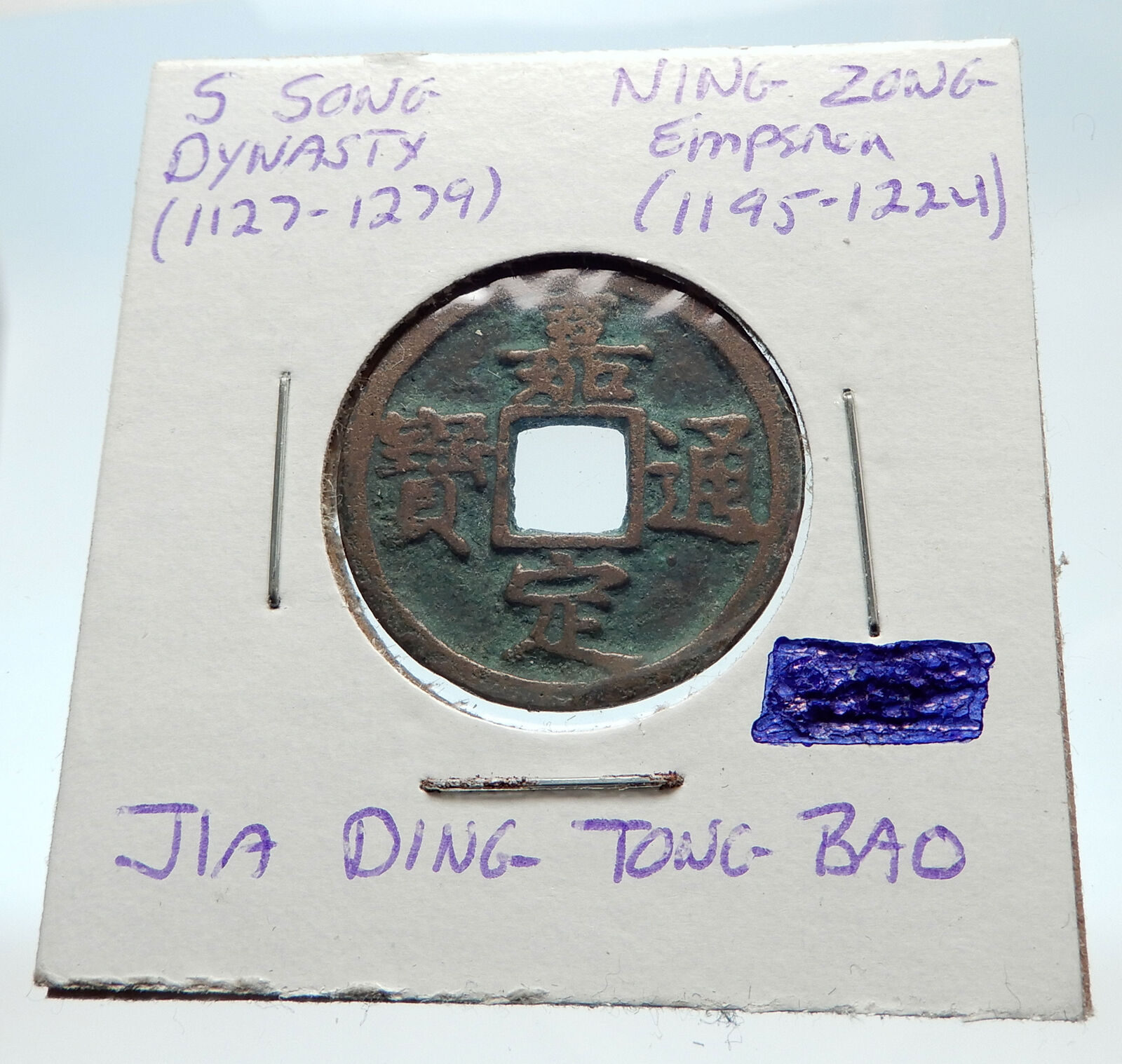|
China – Song Dynasty
Fertility Token
Bronze Cash Token 25mm, (10.47 grams), Struck 7th-10th Century AD
Man and woman embracing four different ways.
Chinese characters.
You are bidding on the exact item pictured, provided with a Certificate of Authenticity and Lifetime Guarantee of Authenticity.
 The Song dynasty (Chinese: 宋朝; pinyin: Sòng cháo; 960–1279) was an imperial dynasty of China that began in 960 and lasted until 1279. The dynasty was founded by Emperor Taizu of Song following his usurpation of the throne of the Later Zhou, ending the Five Dynasties and Ten Kingdoms period. The Song often came into conflict with the contemporaneous Liao, Western Xia and Jin dynasties in northern China. After decades of armed resistance defending southern China, it was eventually conquered by the Mongol-led Yuan dynasty. The Song dynasty (Chinese: 宋朝; pinyin: Sòng cháo; 960–1279) was an imperial dynasty of China that began in 960 and lasted until 1279. The dynasty was founded by Emperor Taizu of Song following his usurpation of the throne of the Later Zhou, ending the Five Dynasties and Ten Kingdoms period. The Song often came into conflict with the contemporaneous Liao, Western Xia and Jin dynasties in northern China. After decades of armed resistance defending southern China, it was eventually conquered by the Mongol-led Yuan dynasty.
The dynasty is divided into two periods: Northern Song and Southern Song. During the Northern Song (Chinese: 北宋; 960–1127), the capital was in the northern city of Bianjing (now Kaifeng) and the dynasty controlled most of what is now Eastern China. The Southern Song (Chinese: 南宋; 1127–1279) refers to the period after the Song lost control of its northern half to the Jurchen-led Jin dynasty in the Jin–Song Wars. At that time, the Song court retreated south of the Yangtze and established its capital at Lin’an (now Hangzhou). Although the Song dynasty had lost control of the traditional Chinese heartlands around the Yellow River, the Southern Song Empire contained a large population and productive agricultural land, sustaining a robust economy. In 1234, the Jin dynasty was conquered by the Mongols, who took control of northern China, maintaining uneasy relations with the Southern Song. Möngke Khan, the fourth Great Khan of the Mongol Empire, died in 1259 while besieging the mountain castle Diaoyucheng, Chongqing. His younger brother Kublai Khan was proclaimed the new Great Khan and in 1271 proclaimed himself Emperor of China, establishing the Yuan dynasty. After two decades of sporadic warfare, Kublai Khan’s armies conquered the Song dynasty in 1279 after defeating the Southern Song in the Battle of Yamen, and reunited China under the Yuan dynasty.
Technology, science, philosophy, mathematics, and engineering flourished during the Song era. The Song dynasty was the first in world history to issue banknotes or true paper money and the first Chinese government to establish a permanent standing navy. This dynasty saw the first recorded chemical formula of gunpowder, the invention of gunpowder weapons such as fire arrows, bombs, and the fire lance. It also saw the first discernment of true north using a compass, first recorded description of the pound lock, and improved designs of astronomical clocks. Economically, the Song dynasty was unparalleled with a gross domestic product three times larger than that of Europe during the 12th century. 9] China’s population doubled in size between the 10th and 11th centuries. This growth was made possible by expanded rice cultivation, use of early-ripening rice from Southeast and South Asia, and production of widespread food surpluses. The Northern Song census recorded 20 million households, double of the Han and Tang dynasties. It is estimated that the Northern Song had a population of 90 million people, and 200 million by the time of the Ming dynasty. This dramatic increase of population fomented an economic revolution in pre-modern China.
The expansion of the population, growth of cities, and emergence of a national economy led to the gradual withdrawal of the central government from direct involvement in economic affairs. The lower gentry assumed a larger role in local administration and affairs. Social life during the Song was vibrant. Citizens gathered to view and trade precious artworks, the populace intermingled at public festivals and private clubs, and cities had lively entertainment quarters. The spread of literature and knowledge was enhanced by the rapid expansion of woodblock printing and the 11th-century invention of movable-type printing. Philosophers such as Cheng Yi and Zhu Xi reinvigorated Confucianism with new commentary, infused with Buddhist ideals, and emphasized a new organization of classic texts that established the doctrine of Neo-Confucianism. Although civil service examinations had existed since the Sui dynasty, they became much more prominent in the Song period. Officials gaining power through imperial examination led to a shift from a military-aristocratic elite to a scholar-bureaucratic elite.
Cash was a type of coin of China and East Asia, used from the 4th century BC until the 20th century AD. Originally cast during the Warring States period, these coins continued to be used for the entirety of Imperial China as well as under Mongol, and Manchu rule. The last Chinese cash coins were cast in the first year of the Republic of China. Generally most cash coins were made from copper or bronze alloys, with iron, lead, and zinc coins occasionally used less often throughout Chinese history. Rare silver and gold cash coins were also produced. During most of their production, cash coins were cast but, during the late Qing dynasty, machine-struck cash coins began to be made. As the cash coins produced over Chinese history were similar, thousand year old cash coins produced during the Northern Song dynasty continued to circulate as valid currency well into the early twentieth century.
In the modern era, these coins are considered to be Chinese “good luck coins”; they are hung on strings and round the necks of children, or over the beds of sick people. They hold a place in various superstitions, as well as Traditional Chinese medicine, and Feng shui. Currencies based on the Chinese cash coins include the Japanese mon, Korean mun, Ryukyuan mon, and Vietnamese văn.
|




 The Song dynasty (Chinese: 宋朝; pinyin: Sòng cháo; 960–1279) was an imperial dynasty of China that began in 960 and lasted until 1279. The dynasty was founded by Emperor Taizu of Song following his usurpation of the throne of the Later Zhou, ending the Five Dynasties and Ten Kingdoms period. The Song often came into conflict with the contemporaneous Liao, Western Xia and Jin dynasties in northern China. After decades of armed resistance defending southern China, it was eventually conquered by the Mongol-led Yuan dynasty.
The Song dynasty (Chinese: 宋朝; pinyin: Sòng cháo; 960–1279) was an imperial dynasty of China that began in 960 and lasted until 1279. The dynasty was founded by Emperor Taizu of Song following his usurpation of the throne of the Later Zhou, ending the Five Dynasties and Ten Kingdoms period. The Song often came into conflict with the contemporaneous Liao, Western Xia and Jin dynasties in northern China. After decades of armed resistance defending southern China, it was eventually conquered by the Mongol-led Yuan dynasty.




